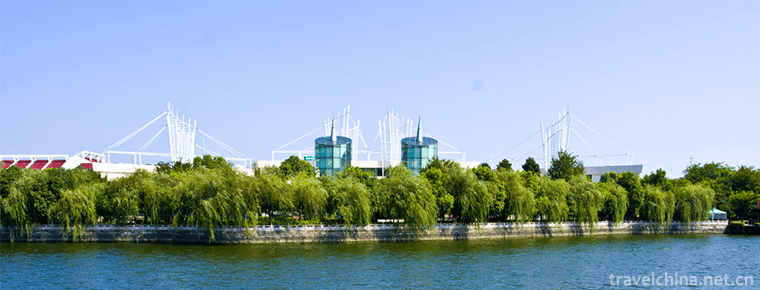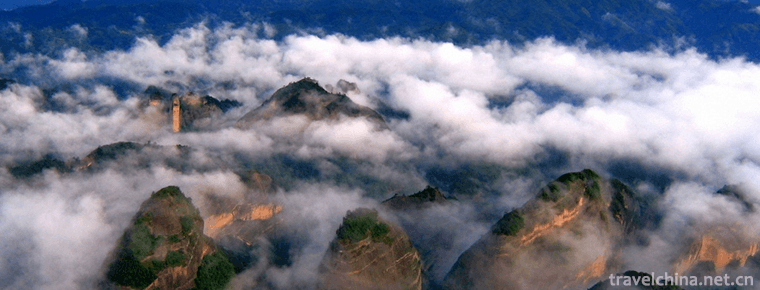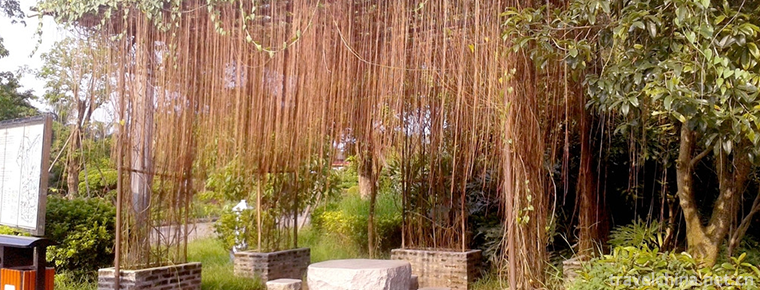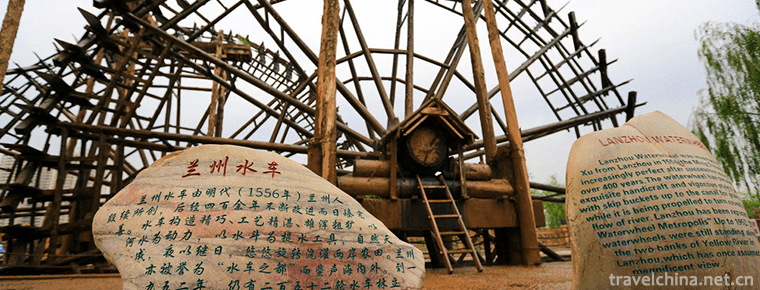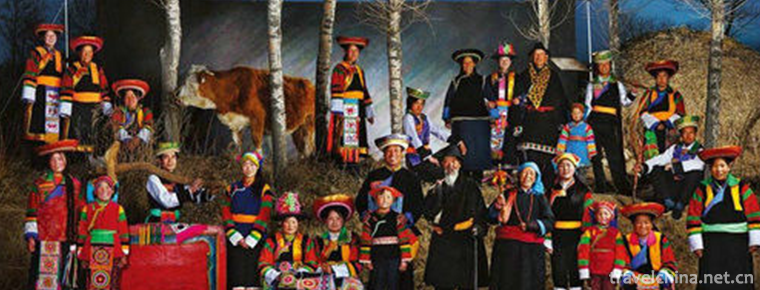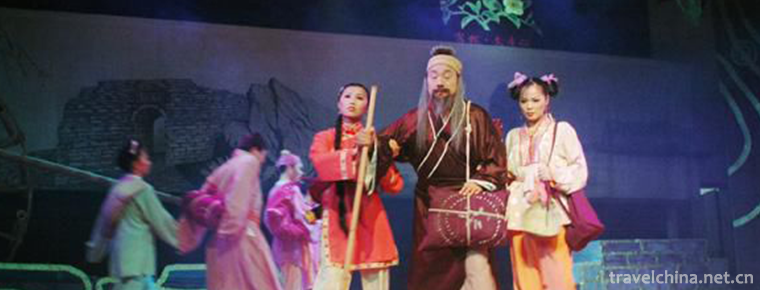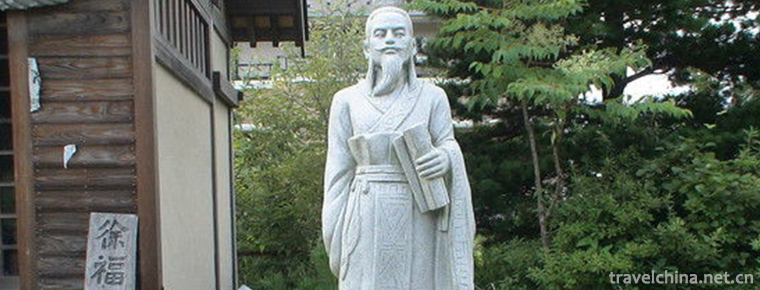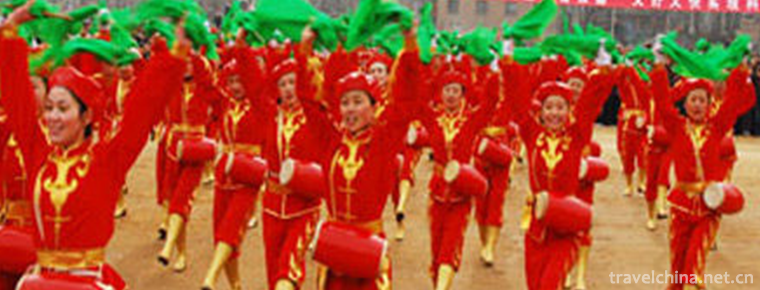Yesanpo Scenic Area Laishui County Baoding
The Yesanpo Scenic Area of Laishui County, Baoding City, Hebei Province, is located in Laishui County, Baoding City. The Taihang Mountains and Yanshan Mountains meet at a distance of 100 kilometers from Beijing, the capital of China, with a total area of 498.5 square kilometers.
The Yesanpo Scenic Area in Laishui County, Baoding is a national AAAAA tourist area, a National Forest Park and a national geological park. Yesanpo Scenic Area mainly includes Bailixia Natural Scenic Area, Juma River Scenic Area, Baicaoban Scenic Area, Yugudong Scenic Area, Longmen Tianguan Scenic Area, Jinhua Mountain Scenic Area, Paradise Lost Lavender Scenic Area, Ethnic Park, etc.
In January 2017, the National Development and Reform Commission issued the National Red Tourism Classic Scenic Spots List, and Yesanpo Scenic Spot in Laishui County, Baoding, was included in the Chinese Red Tourism Classic Scenic Spots List.
The Yesanpo Scenic Spot in Laishui County, Baoding, is located in Laishui County, Hebei Province, with a north latitude of 38 degrees 39 points and an east longitude of 104 degrees 04 points. It is located at the intersection of Taihang Mountain and Yanshan Mountain Ranges, 100 kilometers from Beijing, the capital, and 110 kilometers from Beijing, with a total area of 498.5 square kilometers.
topographic features
The Yesanpo scenic spot in Laishui County, Baoding is located in a special geotectonic location. On the northern end of the Eastern Branch of the Xiongqiao Taihang Mountain deep fault-Zijingguan deep fault zone, which is the most fragile and strong tectonic movement within the North China plate, there are many faults, folds and magmatic intrusion-volcanic eruption. Hair. The scenic area comprehensively reflects the evolution history of Yanshan movement, Himalayan movement and neotectonic movement in the intraplate orogenic belt of North China, including magmatic activity, tectonic deformation and topography. Especially the Bailixia tectonic erosion valley, we can clearly see the guiding role of tectonic factors in each period from the development and evolution process of the valley. Yesanpo has abundant geological and geomorphological landscape resources, especially the types, genesis and evolution of the geological landscape in the three main scenic spots, which are controlled by faults and joints, and structural factors are dominant.
Climatic characteristics
The Yesanpo scenic spot in Laishui County, Baoding is located in a continental monsoon climate with distinct seasons. Located in the Taihang Mountains adjacent to the Shanxi Plateau, the temperature is quite different from the plain outside the mountain. The temperature is not very hot and cool in summer. The average annual temperature is 10.7 degrees Celsius, which is 1.4 degrees lower than that in the plain. Daily temperature is 1-3 degrees Celsius lower than that of the plain. The annual sunshine is 2095 hours and the annual precipitation is 628.8 mm.
Bailixia Scenic Area is 210 kilometers long. At the entrance of the scenic spot, there is a scenic spot called "Xianguan Pilot" which introduces visitors to Scorpion Valley, named for Scorpion Grass pervading in the valley; a canyon in the middle is "Haitangyu", named for its flowering crabapple, which is 70 kilometers long; and the third Canyon is called "Ten Cliffs Gorge", named for its dozens of arc-shaped cliffs. The total length is 90 km. It is known as "the first gorge in the world".
There is a river in the scenic area of the Juma River, which is surrounded by green hills and crisscrossed with tourist routes. It flows over 140 kilometers through the Yesanpo scenic area into the Haihe River. In July and August, the average water temperature of the Juma River ranged from 20 to 22 degrees Celsius, with excellent water quality, clear bottom, not dry all the year round and no ice in winter. There are many scenic spots in the area, such as Python barrage, stone monkey water-playing, stone gate opening, overpass arch, cliff trestle, children's farce and so on.
Longmen Tianguan Scenic Spot is a tourist attraction integrating nature, history and folk culture. There are nine waterfalls, eighteen pools and ten thousand mu secondary forests in Shangtanggou, including "Wangetian Pass" and "Qianfeng Arching". In addition, there are more than 30 cliff inscriptions in Ming and Qing Dynasties. The contents can be divided into two categories, one is to describe the dangers of Guanshan, the other is to describe the magnificence of Guanshan. Describing the beautiful mountains and rivers here, it is the largest cliff stone carving group in North China, known as the largest "historical and cultural corridor" in North China. The existing "Dalongmen Castle", "Caishu'an Great Wall" and "Cliff Stone Carving" in the scenic area are the key cultural relics protection units in Hebei Province. Dalongmen Castle was originally an important pass on the "interior" of the Great Wall of the Ming Dynasty, known as "the throat of territory". The three peaks of the castle were built here, which was the gateway from Kyoto to the outside of the fortress and the place for soldiers to contend for.
Yugu Cave is located in the middle of the scenic area, which is about 1.8 kilometers long and is divided into five layers. Yugu Cave is a scenic spot with Qiquan and Weidong as its main body. There are many famous springs in Yugudong scenic spot, including Yugu Spring, Shenyu Spring, Shendong Spring and Shentianquan Spring. Among them, Yugu Spring is famous and is also recognized as one of the eight weird springs in China. Fish Valley Cave has peculiar geology, as well as vivid stone flowers, cloud basins, goose tubes, stalactites and so on.
Jinhua Mountain Scenic Area is located in the northwest of the scenic area. It is one of the six major scenic spots of Yesanpo National Scenic Area in Hebei Province. The scenic area is dominated by famous mountain waterfalls, forest scenery and scenic spots. The scenic spot covers an area of about 67 square kilometers and its main peak, Jinhua Mountain, is 1711 meters above sea level. The scenic spots include Linhai, Lala Lake Falls, Ginkgo biloba for thousands of years, Qing Tan Temple of ancient buildings, etc.
Yesanpo Paradise Lost Garden Lavender Theme Manor covers an area of 0.67 square kilometers. The manor is situated on the Bank of Yesanpo Juma River. More than 100 kinds of plants such as lavender, verbena, rosemary, thyme and clover are planted in the park. The manor is themed by "idyllic landscape and romantic love". The manor has a door of love and French style. Windmills and so on.
Yesanpo National Park was built in 1991. It is the earliest, largest, most equipped and fully functional leisure and tourism resort in the whole scenic area. The National Park covers an area of 0.1 square kilometers, with a building area of more than 0.024 square kilometers. The National Park is surrounded by mountains and water on three sides. It has beautiful scenery. There are wooden houses, costumes and pictures of major festival celebrations inhabited by Miao, Dong, Mosuo, Lisu and Dulong ethnic minorities.
In the Ming Dynasty, it was rebuilt as a military empire. From the time of Jiajing, it was guarded by the commander-in-chief of Qinyi Dalongmen Gate Gate Gatekeeper. In the Qing Dynasty, it followed the Ming Dynasty system and was abolished until Guangxu.
In the Qing Dynasty, because the people of Sanpo respected the Ming Dynasty, the Qing court exerted pressure on the people here, ordered the people of Sanpo not to intervene in the imperial examinations, cancelled the power to seek "merit and fame", and some foreign bandits colluded with the government to extort money, so they were forced to organize slope protection armed forces to defend the countryside. Because of the resistance to feudal forces, the Qing government imposed a word "wild" on the people of Sanpo. Since then, Yesanpo's "old man system" has also been handed down, which lasted until the eighteenth year of the Republic of China.
During the Anti-Japanese War, Yesanpo was the central hinterland of Pingxi Anti-Japanese Base Area, and many heroic deeds emerged. Revolutionary relics such as the Eighth Route Armament Factory, Guerrilla Trail and the Cemetery of Martyrs Resisting Japan in Pingxi are still well preserved. Yesanpo, an old revolutionary area, has become a natural classroom for patriotic education.
In 1985, industry leaders, Beijing experts and media were invited to visit the scenic spots for many times. A series of forward-looking opinions and suggestions were provided for the initial tourism development and positioning of the scenic spots, and the tourism development plan of the scenic spots was drawn up, which provided a strong basis for the development of the scenic spots.
In 2008, the government invested 50 million yuan to complete the construction of Yesanpo Grand Theater, creating a large-scale dance historical painting "Impression Yesanpo" with the long history and heavy culture of Laishui and Yesanpo as the main line, which deduces Yesanpo and the brilliant history and culture of the whole Yellow River Basin.
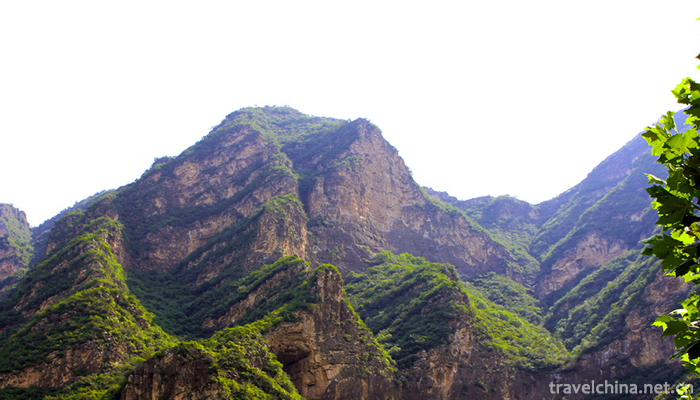
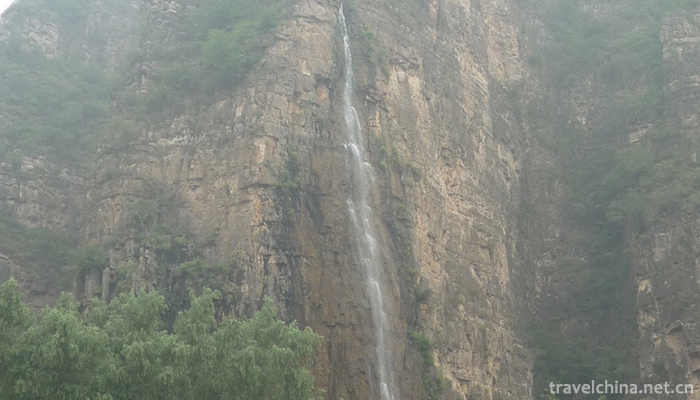
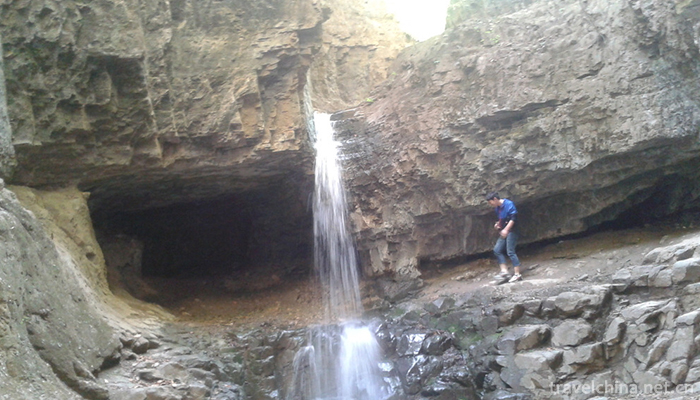
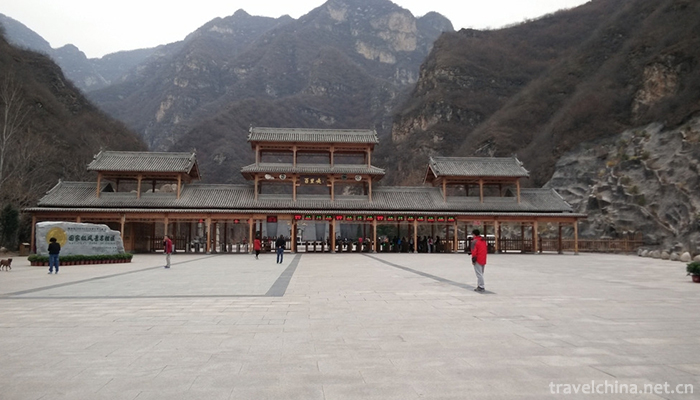
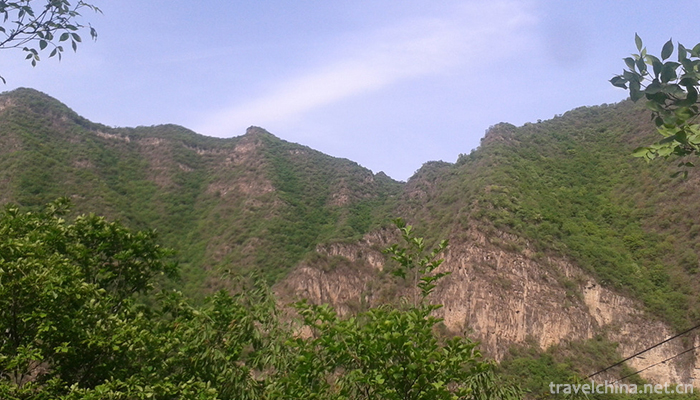

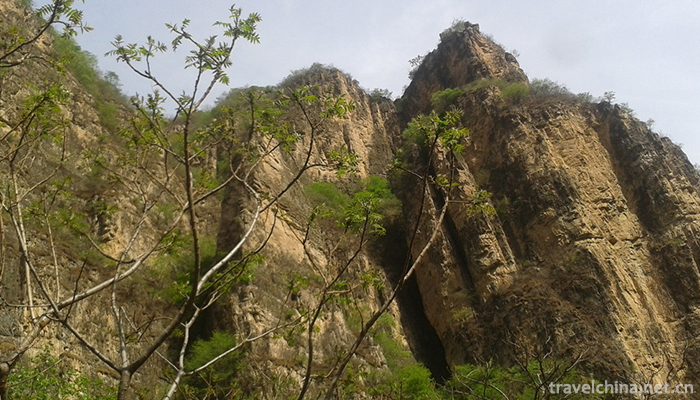
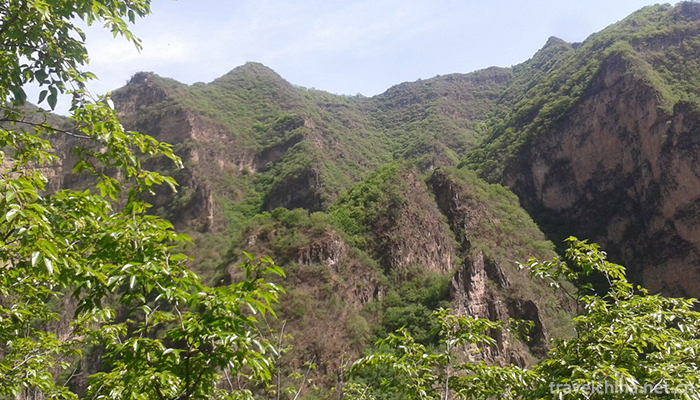
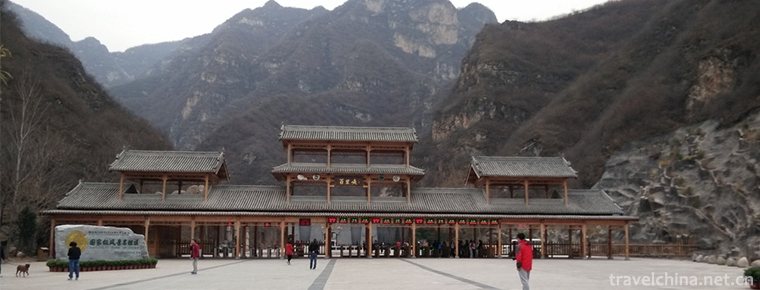
Yesanpo Scenic Area Laishui County Baoding
-
Tianmu Lake
Tianmu Lake is located eight kilometers south of Liyang City, Changzhou. It is named Tianmu Lake because it belongs to the remnants of Tianmu Mountain
Views: 167 Time 2018-12-06 -
Lang Mountain Scenic Area
Langshan is located in the northwest side of the hinterland of the Yuechengling Mountains, which is the longest in Wuling Mountains. It spans Xinning County and Resource County
Views: 236 Time 2018-12-12 -
Dongping Lake Scenic Spot
The total area of Dongping Lake Scenic Spot is 627 square kilometers, the annual water surface is 209 square kilometers, the average water depth is 2.5 meters, and the total water storage is 4 billion
Views: 200 Time 2018-12-20 -
Kaiping Garden
Kaiping Liyuan is located in Bohua Village, Tangkou Town, Kaiping City, Guangdong Province. It is a private garden of Xie Weili, an overseas Chinese traveling to the United States in Tangkou Town
Views: 151 Time 2019-01-29 -
Qianling Mountain Park
Qianling Mountain Park is a comprehensive tourist park, built in 1957, located in the northwest corner of Guiyang City. It is named Qianling Mountain because of its "first mountain in southern Gu
Views: 194 Time 2019-02-07 -
Waterwheel Garden
On August 26, 2005, Lanzhou, known as the "Water Vehicle Capital", built a Water Vehicle Expo Park, which reproduced the spectacular scene of water vehicles on both sides of the Yellow River
Views: 237 Time 2019-02-08 -
Qijia Yanxi
"Qijia Yanxi" is a long narrative poem in Tu folk literature. It records the eleventh generation of Qi Tusi Chief Qi Yanxi in the history of Tu people, despite his old age and physical decli
Views: 202 Time 2019-06-10 -
Wennan Ci
Wennan Ci, also known as Wenci opera and Wenci opera, is an ancient traditional opera, and is praised as the "living fossil" of Chinese opera. It is popular in Dongzhi County and Susong Coun
Views: 107 Time 2019-06-28 -
Legend of Xu Fudong Du
Xufu Dongdu legend is one of the local folklores in Cixi City, Zhejiang Province and Xiangshan County. It originated from the story that Qin Shihuang sought immortality and Xu Fu sought immortality bu
Views: 170 Time 2019-07-08 -
Yicheng Flower Drum
Yicheng Huagu, according to historical records, existed during the Zhenguan period of the Tang Dynasty, reached its peak in the Ming Dynasty, and only in the Qing Dynasty did this activity have a clea
Views: 214 Time 2019-07-13 -
Guo Moruo
Guo Moruo (1892 1978), formerly known as Guo Kaizhen, the word Ding Tang, the warrior, the baby name leopard, the pseudonym of Mo, Michael, Guo Dingtang, Shi Tuo, Gao Ruhong, Yang Yi and so on. Born i
Views: 221 Time 2019-09-07 -
Chinese Qiang Museum
Qiang museum is a local ethnic Museum, located in the south of Qiangxing street in Maoxian county. It was officially opened in 1988 when the Qiang traditional festival "Qiang calendar year". It is the only Qiang Museum in China.
Views: 112 Time 2020-11-06
